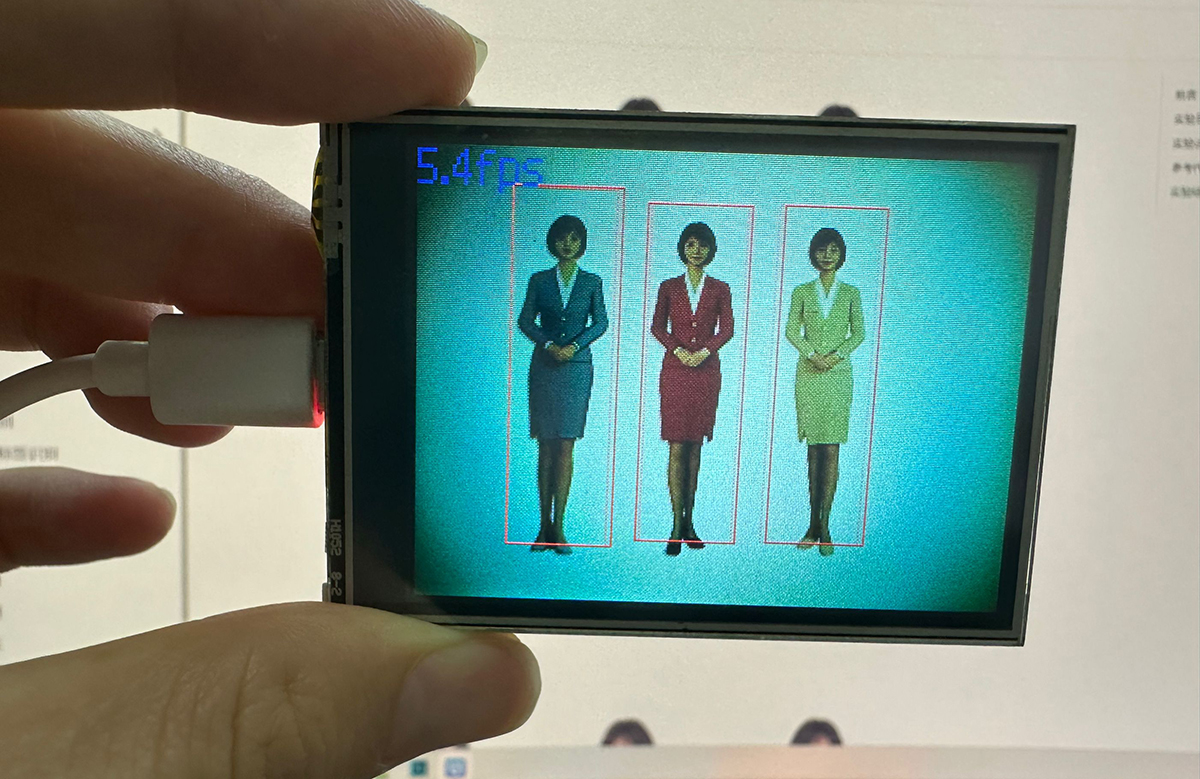人体检测
前言
人体检测是判断摄像头画面中有无出现人体,常用于人体数量检测,人流量监控以及安防监控等。本节我们来学习一下如何通过MicroPython编程快速实现人体检测。
实验目的
人体检测并通过画框提示。
实验讲解
本实验还是使用到YOLO2网络,结合人体检测模型来识别人体。KPU对象说明可参考KPU简介章节内容。
具体编程思路如下:
参考代码
#实验名称:人体检测
#实验平台:01Studio CanMV K210
#导入相关模块
import sensor, image, time, lcd
from maix import KPU
import gc
lcd.init()
sensor.reset() # Reset and initialize the sensor. It will
# run automatically, call sensor.run(0) to stop
sensor.set_vflip(1) #将摄像头设置成后置方式(所见即所得)
sensor.set_hmirror(1) #GC0328摄像头(如果使用ov2640摄像头,注释此行。)
sensor.set_pixformat(sensor.RGB565) # Set pixel format to RGB565 (or GRAYSCALE)
sensor.set_framesize(sensor.QVGA) # Set frame size to QVGA (320x240)
sensor.skip_frames(time = 1000) # Wait for settings take effect.
clock = time.clock() # Create a clock object to track the FPS.
od_img = image.Image(size=(320,256))
#构建KPU对象
anchor_body_detect = (0.0978, 0.1758, 0.1842, 0.3834, 0.3532, 0.5982, 0.4855, 1.1146, 0.8869,
1.6407, 1.2388, 3.4157, 2.0942, 2.1114, 2.7138, 5.0008, 6.0293, 6.4540)
body_kpu = KPU()
print("ready load model")
#加载KPU模型,放在SD卡根目录
body_kpu.load_kmodel("/sd/uint8_person_detect_v1_old.kmodel")
body_kpu.init_yolo2(anchor_body_detect, anchor_num=9, img_w=320, img_h=240, net_w=320 ,
net_h=256 ,layer_w=10 ,layer_h=8, threshold=0.7, nms_value=0.2, classes=1)
while True:
gc.collect()
clock.tick() # Update the FPS clock.
img = sensor.snapshot()
a = od_img.draw_image(img, 0,0)
od_img.pix_to_ai()
#将摄像头采集图片输送到KPU和yolo模型运算。
body_kpu.run_with_output(od_img)
body_boxes = body_kpu.regionlayer_yolo2()
if len(body_boxes) > 0:#识别到人体
print(body_boxes) #打印所有人体识别框信息
for l in body_boxes :#画矩形
a = img.draw_rectangle(l[0],l[1],l[2],l[3], color=(255, 0, 0), thickness=2)
fps = clock.fps()#计算FPS
a = img.draw_string(0, 0, "%2.1ffps" %(fps), color=(0, 60, 128), scale=2.0)
lcd.display(img)
body_kpu.deinit()
实验结果
将资料包例程源码中的 uint8_person_detect_v1_old.kmodel 模型文件拷贝到SD卡中。
在CanMV IDE中运行上述代码,将摄像头对准下方图片,可以看到人体被正确的识别出来:
原图:

识别结果:
